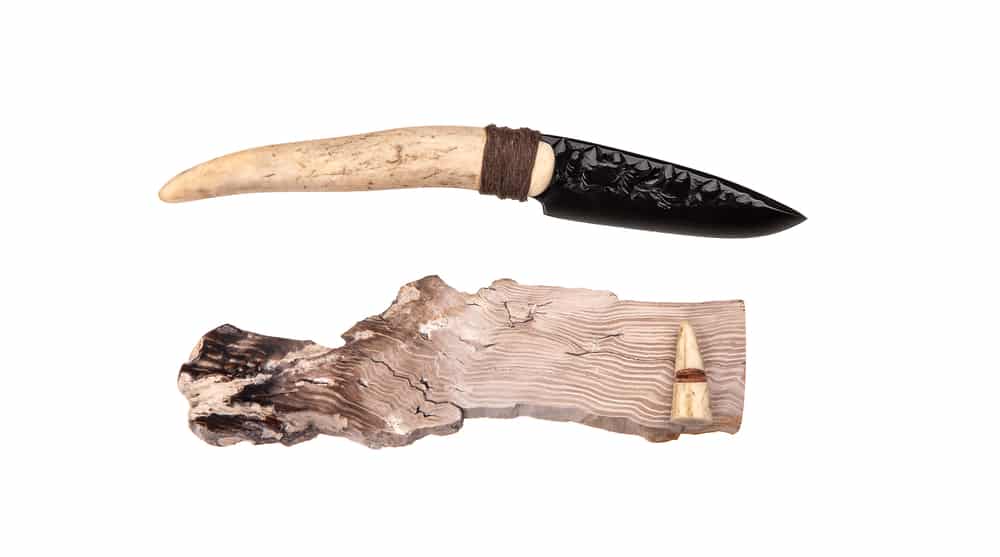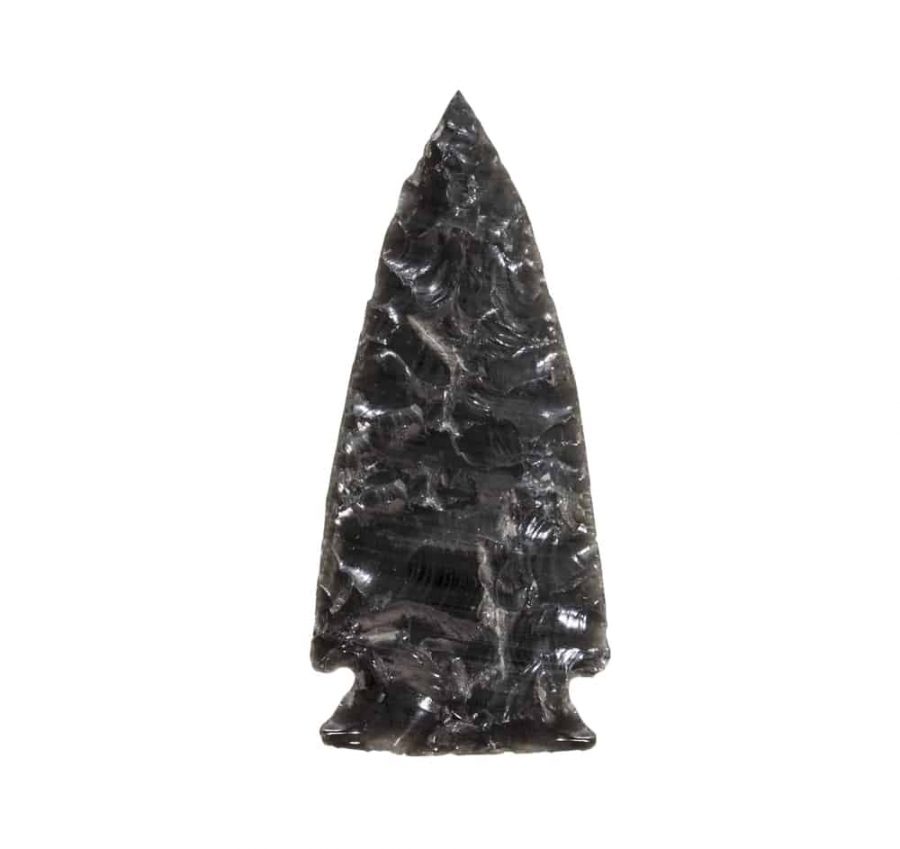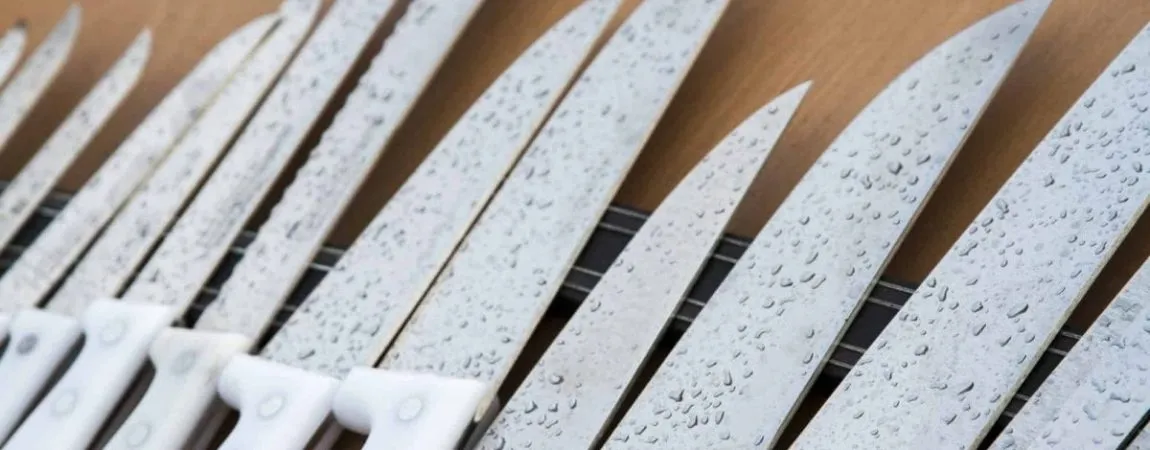In short, the sharpest knife in the world is probably an obsidian knife. While impractical for use in a kitchen, the thinness of an obsidian blade makes its sharpness unparalleled. In this post, we’ll be exploring what impacts the sharpness of a blade.
We’ll cover why obsidian knives are so sharp as well as some more reasonable considerations for use in your kitchen at home.

What Impacts Knife Sharpness?
The main factor that impacts the sharpness of a blade is its thickness. The thinner the blade, the less force is needed for it to cut food – or anything for that matter – effectively. A good analogy to use is to imagine diving into a pool of water.
If you ‘belly flop’ into the water, you’re going to have a much harder time actually penetrating its surface. If you dive fingertips first into the pool, however, the thinner, pointed shape created by your body will glide into the water effortlessly.
The same is true for the edge of a knife.
Click here to learn how to test knife sharpness.
The Sharpest Knife in the World
Obsidian knives are currently the sharpest possible knives known to man. Their staggeringly thin blades are the reason for this. The way that obsidian breaks are known as a conchoidal fracture.
This kind of fracture looks very different from the edge of a traditional chef’s knife. When you zoom in very close to a steel blade, the edge looks more like a saw than a straight line. With a conchoidal fracture, the line is much straighter and therefore sharper.
How Sharp are Obsidian Knives?
The edge of an obsidian blade can be just 3 nanometers across. This is around ten times sharper than the sharpest razor blade. In short, obsidian blades are impossibly sharp.

How Strong is an Obsidian Blade?
Obsidian is reasonably strong but is also very brittle. It’s rated between 5 and 5.5 on what’s known as the Mohs scale of hardness. Diamonds clock in at around 10 on this scale, so obsidian is in the middle of the road here.
However, obsidian can snap and break very easily as it’s a brittle material.
Why Don’t We Use Obsidian Knives in the Kitchen?
Because they’re so brittle! They also leave glass fragments behind in the things they’re cutting. Obsidian has been tested as a potential material for surgical scalpels but is often swiftly rejected.
The debris they leave behind wouldn’t be safe for the human body. The same is true for the foods we prepare.
What are Obsidian Knives Used for?
In short, not much these days. Obsidian blades were a powerful tool during the stone age. While they’ve been used in a medical context in recent history, the unpredictable, brittle nature of obsidian means it’s far less common as a cutting material today.
What About Commercial Kitchen Knives?
There are plenty of products claiming to be the sharpest but in general, it’s better to focus on:
- Sharpening style (double vs single edge)
- The thickness of the blade
- The reviews you see for specific knives online
With regular sharpening and good maintenance, you shouldn’t have to worry too much about having the ‘sharpest knife in the world.’

World’s Sharpest Knife – Conclusion
While obsidian blades are probably the sharpest in the world, they’re not practical or safe for use in the kitchen. When shopping for commercial kitchen knives, it’s best to focus on the thinness of the blade, the sharpening style used, and online reviews.




Post Your Thoughts